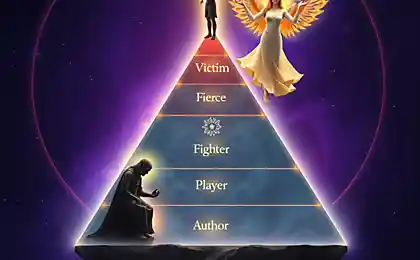167
Why we are attracted to people with whom there is no future
546192
When entering into a new relationship, we always hope for mutual feeling, cloudless joy and a promising future. However, the paradox of the human psyche is that we are magnetically attracted to people with whom it is almost impossible to build long-term relationships. This phenomenon is so common that psychologists have singled it out as a separate area of research, studying the mechanisms of emotional attachment to unavailable partners.
We do not fall in love with people, but with our own projections and unresolved internal conflicts.
Anatomy of attraction to inaccessibility
Modern psychology explains this phenomenon through the prism of attachment theory developed by John Bowlby. According to research conducted at the University of Rochester, people with disturbed attachment patterns in childhood tend to reproduce familiar scenarios of emotional instability in adult relationships.
Key factors of attractiveness of inaccessibility:
- Activation of the dopamine reward system under uncertainty
- Reproduction of childhood attachment patterns
- Projecting your own internal conflicts
- The Illusion of Control over an Uncontrolled Situation
Neurobiological studies show that uncertainty in relationships activates the same areas of the brain as drugs. Dopamine is released not when you receive the desired, but when you expect a possible reward. That is why an inaccessible partner becomes a source of constant “high” from hope.
Psychological mechanisms of self-deception

Anna, a 32-year-old marketer from Moscow, said: I always chose men who were emotionally unavailable. Married, living in other cities, or simply not ready for a serious relationship. It was only after working with a psychologist that I realized that I was protecting myself from the real intimacy I feared most.”
This case illustrates the classical mechanism of psychological defense. Choosing a knowingly unavailable partner, we create a safe distance that allows you to experience strong emotions without risking to really open up to another person.
Main types of inaccessible partners
Psychologists distinguish several categories of people who attract us with their inaccessibility:
- Emotionally closed People who avoid deep emotional connection
- Physically inaccessible partners at a distance or with limited time
- Busy with other relationships Married or with serious obligations
- Temporarily inaccessible People in Transitional Life Period
If you are constantly in a relationship with no perspective, it may indicate deep psychological patterns that need to be worked out. Ignoring these signals can lead to chronic dissatisfaction in your personal life.
Biochemistry of Passion and Attachment
Research by neuroscientist Helen Fisher of Rutgers University has shown that romantic attachment to an inaccessible object activates areas of the brain associated with motivation, reward and purposeful behavior. At the same time, the activity of the prefrontal cortex, responsible for critical thinking, decreases.
This explains why when we fall in love with an inaccessible person, we often make irrational decisions and ignore the obvious red flags. Our brain literally turns off logic in favor of emotional responses.

Practical strategies to overcome destructive patterns
Step-by-step algorithm for working with yourself:
Step 1: Pattern awareness
Analyze your last 3-5 significant relationships. Find common features in the choice of partners and the dynamics of relationship development.
Step 2: Root Research
Examine your childhood experiences and relationships with parents. Often, patterns of inaccessibility originate in early attachment experiences.
Step 3: Development of self-awareness
Keep a journal of emotions. Write down how you feel in moments of special attraction to inaccessible people.
Step 4: Practice conscious choice
Before starting a new relationship, honestly assess their prospects and their true motives.
Emotional Self-Regulation Techniques
When you feel a strong attraction to a knowingly inaccessible person, try the following techniques:
- Stop frame technique: Stop and ask yourself three questions: “How am I feeling?”, “Why am I feeling this?”, and “What will this give me in the long run?”
- Visualizing the future: Imagine yourself in a year in this relationship. What will they be? Will they bring happiness?
- Switching focus: Consciously focus on people who are truly available for a relationship.
Paradoxically, healthy relationships often seem less exciting at the outset. They don’t provide the intense emotional “drug” we’re used to in relationships with unavailable partners.
Signs of a healthy relationship:
- Reciprocity of interest and initiative
- Openness to Planning for a Shared Future
- Emotional accessibility and willingness to be close
- Stability in communication and behavior
- Willingness to resolve conflicts constructively
Michael, a 28-year-old programmer, shares his experience: When I met my current wife, I was... bored at first. She was predictable, open, ready for a relationship. I didn’t have the anxiety I was used to. But gradually I realized that this is true intimacy — calm, reliable, evolving.
Dealing with self-esteem and fear of intimacy
Often, attraction to inaccessible people masks a deep fear of intimacy and low self-esteem. We unconsciously choose those who cannot truly recognize us and therefore reject us.
Working with self-esteem includes:
- Developing self-acceptance and self-love
- Working with an internal critic
- Creating a realistic view of yourself
- Developing healthy attachment skills
Contact a psychologist if:
- The pattern of inaccessible relationships is repeated more than three times in a row
- You experience severe depression after breakups
- Relationships are accompanied by destructive behavior
- You can’t break a toxic bond yourself.
Modern psychotherapy offers effective methods of working with attachment patterns: schema therapy, emotionally focused therapy, cognitive behavioral therapy.
The Path to Mature Relationships
Overcoming the attraction to inaccessibility is the path to emotional maturity. Mature relations are built not on passion for the unattainable, but on mutual respect, trust and willingness to compromise.
Key principles for building healthy relationships:
- Authenticity Be yourself, not play a role
- Reciprocity Equal contribution to the development of relationships
- Patience Allow relationships to develop naturally
- Realism Accept your partner as he is.
Remember, the ability to build healthy relationships is a skill you can develop. Every bad experience with an inaccessible partner can be a valuable lesson on the way to true intimacy.
The material is prepared on the basis of research in the field of attachment psychology and has an informational nature. In case of serious problems in the relationship, it is recommended to contact a qualified specialist.
Glossary
Attachment theory
A psychological theory that describes the formation of emotional bonds between people, especially between a child and a caregiver.
dopamine system
Neurobiological system of the brain responsible for motivation, pleasure and reward system.
Pattern.
A persistent pattern of behavior, thinking, or emotional response, often unconscious.
projection
A psychological defense mechanism in which a person attributes their own feelings, thoughts, or motives to others.
Emotional accessibility
The ability to openly express emotions and be responsive to the emotional needs of a partner.
Prefrontal cortex
The area of the brain responsible for executive function, decision-making and impulse control.
Scheme therapy
Integrative approach in psychotherapy, combining elements of cognitive-behavioral, psychodynamic and Gestalt therapy.
Authenticity
The quality of being true to yourself, your values and beliefs in relationships with others.
10 Signs You’re a Dynamic Personality and That’s Good
Digital rage: how to deal with anger from social media and news























